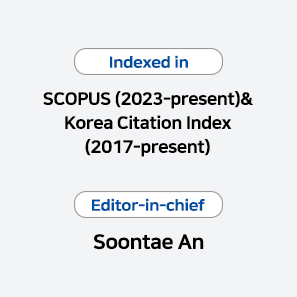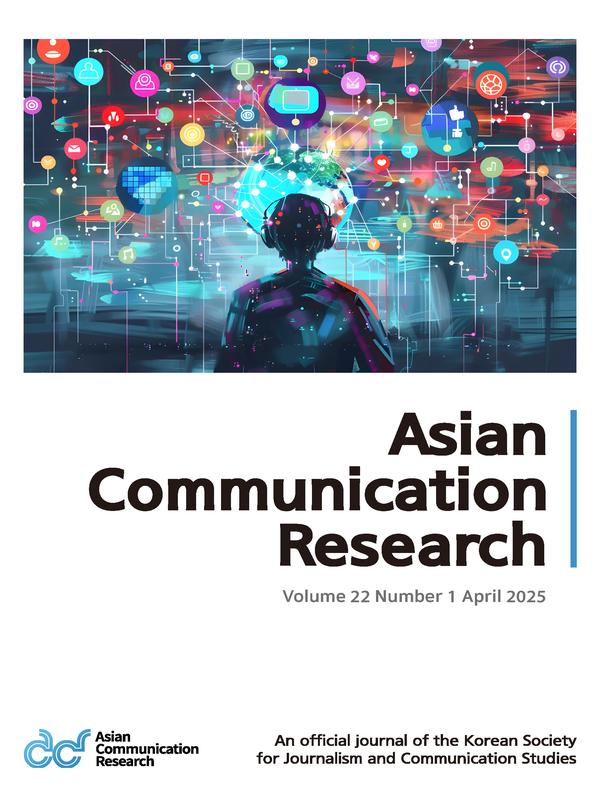| About ACR | Editorial Board | Guide for Authors | View Articles | Submit Manuscript |

Sorry.
You are not permitted to access the full text of articles.
If you have any questions about permissions,
please contact the Society.
์ฃ์กํฉ๋๋ค.
ํ์๋์ ๋ ผ๋ฌธ ์ด์ฉ ๊ถํ์ด ์์ต๋๋ค.
๊ถํ ๊ด๋ จ ๋ฌธ์๋ ํํ๋ก ๋ถํ ๋๋ฆฝ๋๋ค.
Call for Papers
Call for Papers: Asian Communication Research
Special Issue Title
Circuits of K-content: Co-productions, Collaborations, and Connections
Guest editor
David C. Oh, Associate Professor, Syracuse University
Deadline
Abstracts (500-word limit) by September 15, full drafts by December 1, 2025
Background
After the first uses of โHallyuโ in Chinese newspapers nearly thirty years ago, the metaphor of a Korean wave has largely been understood as fluid movements that radiate out from South Korea. Research on the Korean Wave has largely operated on this metaphor, whether celebratory or critical. Celebratory accounts in marketing, political science, or the emergent Hallyu studies have tended to understand the import and interest in โK-contentsโ as a sign of soft power and neoliberal economic advantage.
In some cases, the research has been motivated by a desire to strengthen and extend the Korean Waveโs distance, desirability, and duration for the nationโs political economic advantage. These utilitarian approaches imaged K-contents as tools to extend the nationโs influence or market position. In other cases, humanistic textual questions considered ontological questions about K-contents that allowed for its popularity. Borrowing from Shimโs (2006) foundational application of Bhabhaโs (1996) postcolonial theory of hybridity, it has been a popular explanation for K-contents stylistic choices, language, and ideological meanings. In other cases, different waves are constructed into typologies to explain the sociotechnological interactions that shape the contexts, or the waters, in which K-content is experienced.
Less frequently, a few critical scholars have looked askance at the wave to interrogate the machinations of geopolitical power. Writing about Japan and Korea, Iwabuchiโs (2010) theory of brand nationalism warns that the overdetermination of the โKโ or the โJโ hides serious problems such as global media ownership and international intellectual property regimes. These are ideological and geopolitical projects, which is a concern also raised by Korean Wave scholars who apply โsubempire,โ Chenโs (1999) theory about the complicity and participation by some East Asian countries with the neocolonial, neoliberal Western order.
What these approachesโcelebratory and criticalโhave in common is the assumption of an outward cultural impact. Whether the wave just makes damp or overwhelms like a typhoon, the wave metaphor and its unidirectionality are originating assumptions in much of the textual and production research. It is the purpose of this special issue to look otherwise and to consider not the question of flows and effects but of connections. Instead of ripples outward, the movement of K-content can be understood as currents within a complex circuit in which the contents of other nations can travel back through existing pathways and in which interactions change the nature of the current. After two decades of Korean Wave research, it is appropriate to also understand the receiving nations as not only accepting or rejecting Korean media but actively interacting with it. Although this has been explored in transnational audience research, the existing literature tends to not explore textual or industry questions that center the agency of other nations in which K-contents interact.
For this reason, the special issue is interested in understanding the mediated connections and meanings that are produced in co-productions, in metatextual narrative, in remakes and adaptations, and other forms of industry connection. The special issue particularly values new ways of thinking about co-constituted circuits with K-content rather than the metaphor of the Korean Wave, and, relevant to the journal, it is especially interested in these connections in the Asia-Pacific region. Papers that can humanistically investigate particular cases as well as theorize connections through existing and new frameworks are especially valued.
Topics might include but are not limited to:
- - Remakes of K-content or Korean remakes of other nationsโ content
- - Adaptations of K-content or Korean adaptation of other nationsโ content
- - Co-production and textual meanings
- - The production of co-productions โ negotiating language, work, culture, distribution, etc.
- - Industry connections and collaboration
- - Narratives of inter-Asian connection, e.g., Ajoomma
- - Diasporic narratives and documentaries โ Koreans abroad or diasporas in Korea
- - Film festivals โ Korean film festivals abroad or Asian-Pacific film festivals in Korea
Submission guidelines
Interested authors should submit an abstract to David C. Oh at dcoh@syr.edu, the special issue guest editor, by September 15, 2025. Selected abstract authors will be invited to submit their full papers to the Asian Communication Review for anonymous review. Because papers will undergo anonymous review, an invitation to submit a full paper is not a guarantee of the manuscriptโs acceptance.
Submissions should be formatted to APA 7th style and will have a word count of 6,000-8,000 words (all-inclusive). The special issue has an anticipated August 2026 publication date.
The Asian Communication Review is the first English-language academic journal in Journalism and Communication Studies published in South Korea. It is one of the official journals of the Korean Society for Journalism and Communication Studies. It is indexed in SCOPUS and KCI (Korean Citation Index).
Anticipated timeline
| 15 September 2025 | Abstracts due |
| 30 September 2025 | Approved abstracts โ invitation to submit full articles |
| 15 December 2025 | Full article deadline |
| 31 January 2026 | First round reviews returned |
| 15 March 2026 | Revisions submitted |
| 15 April 2026 | Second round reviews returned |
| 30 June 2026 | Final revisions deadline |
| August 2026 | Special issue publication |

| Editorsโ Pick | |||
|














